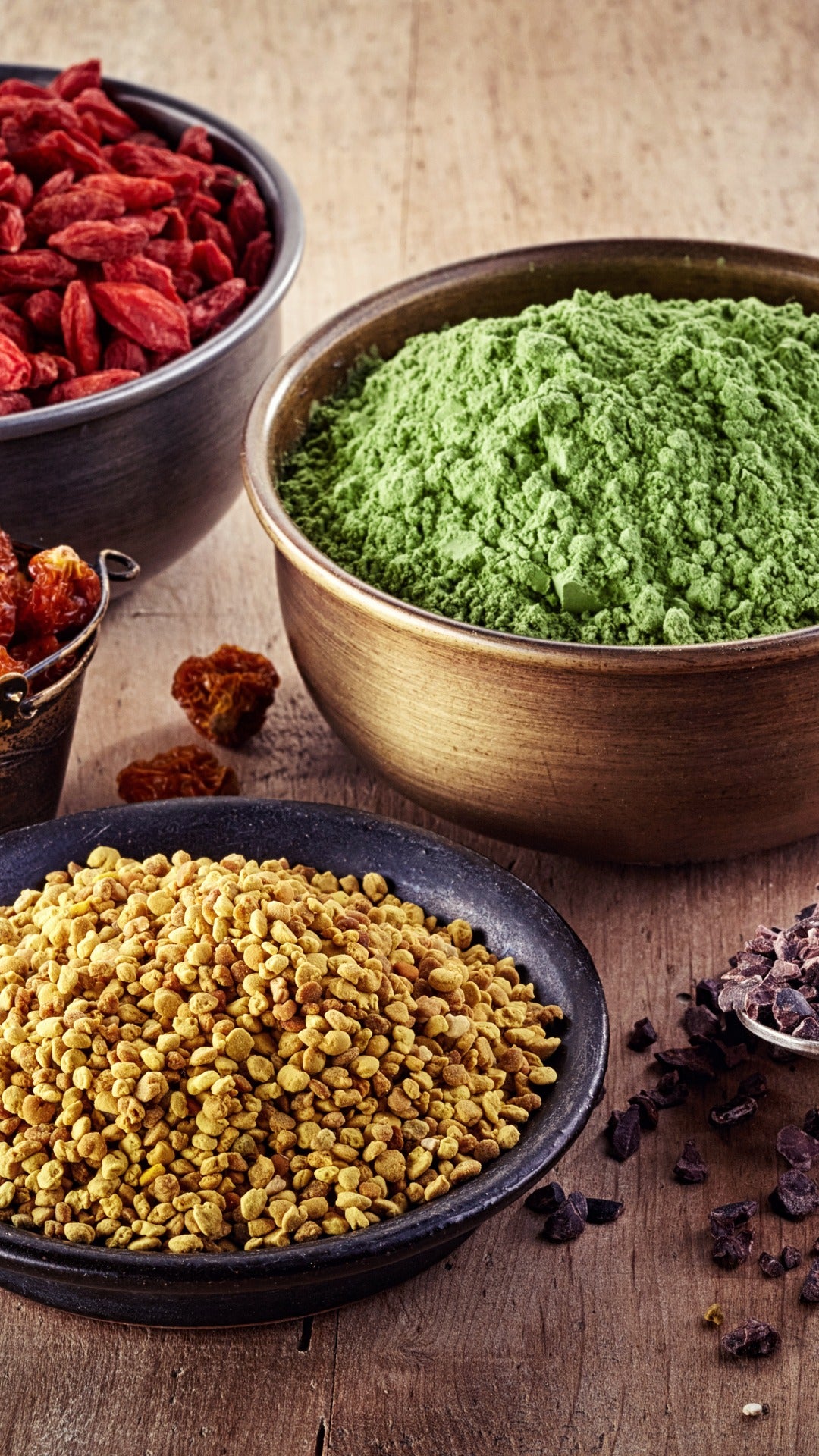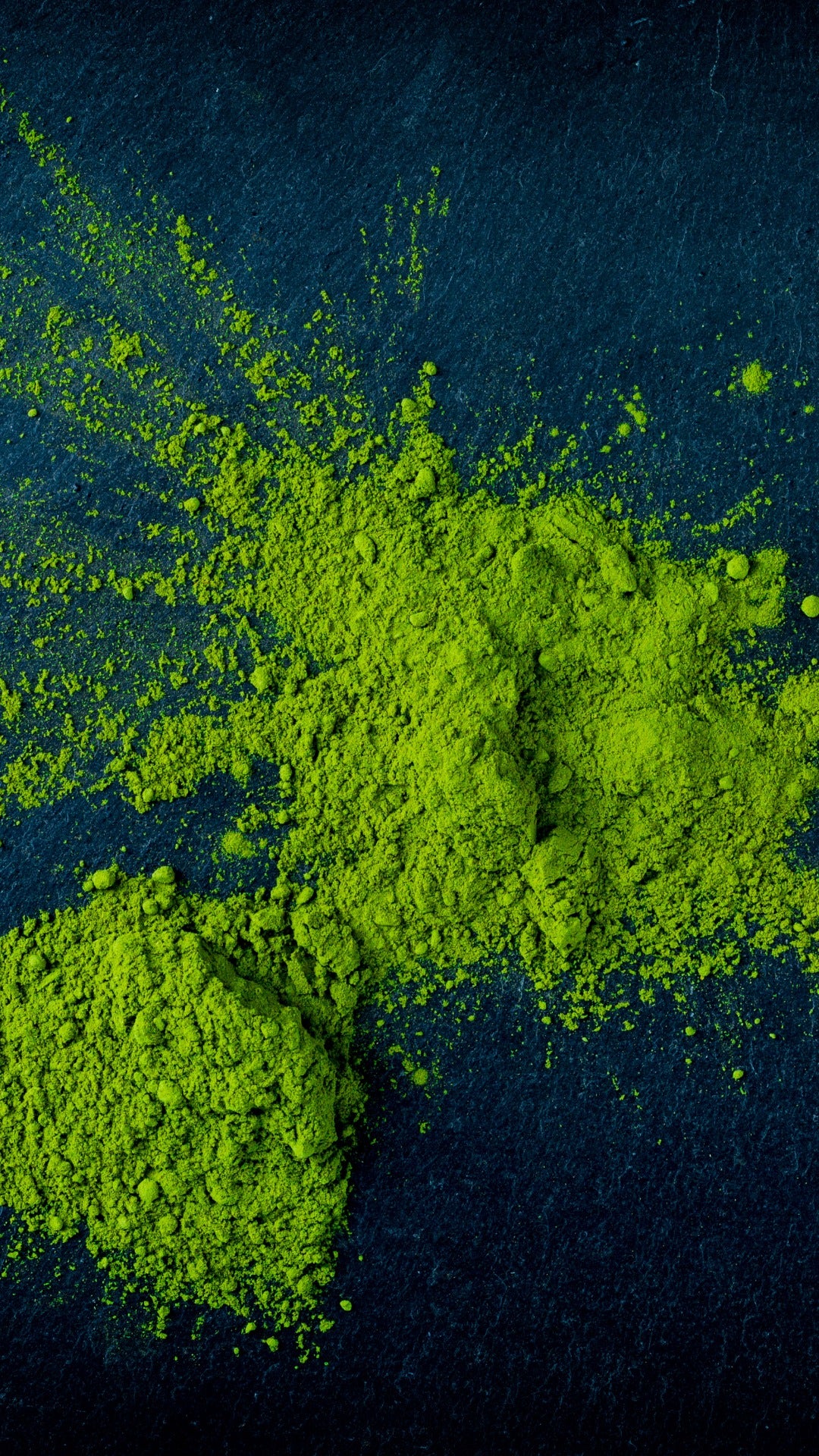WHAT IS MATCHA?
Matcha is an exquisite Japanese finely ground green tea made from the youngest and greenest parts of the Camellia sinensis tea plant. Only a few dozen tea farmers have the complex knowledge to produce this high quality tea. The tea leaves destined for matcha are grown slowly in shady plantations, then steamed, dried, and ground into a fine, bright green powder in slow-turning granite stone mills. Therefore, matcha literally means "ground tea." To prepare the "elixir of life," hot water is poured over it and whipped with a special bamboo whisk to create a creamy, rich and unique green tea.

THE EFFECT OF MATCHA
The most important difference between Matcha and other teas is the fact that when you drink Matcha, you consume the tea leaf in its entirety (as a ground powder whipped in hot water) and enjoy all the beneficial ingredients contained in the tea leaves. The caffeine content in Matcha provides a gentle boost of energy and a clear, alert mind, without anxiety or an increased heart rate like coffee. This is due to the tea-exclusive L-theanine, which is found in high amounts in Matcha. The calming effect of this unique amino acid harmonizes perfectly with the stimulating properties of caffeine. The effect of Matcha: an amazing balance of invigoration and relaxation.

IS MATCHA THE SUPERFOOD?
Matcha has the highest ORAC (Oxygen Radical Absorbing Capacity) value of 1,711 units/gram. This antioxidant capacity is many times higher than that of pomegranates, goji berries or blueberries, for example, and makes Matcha a natural product with the highest known content of cell-protecting antioxidants. The "elixir of life" thus occupies an undisputed position among the so-called superfoods and is a natural weapon against free radicals, which are known to cause various chronic diseases, including cancer.

MATCHA FOR CUISINE?
This vivid green superfood can be enjoyed on its own, but also as an ultimate ingredient for drinks, cakes, desserts and everything you can imagine. There are no limitations to your creativity. No matter what you decide for, Matcha will unfold its health-promoting properties and give you strength and energy for the whole day. This being said: coffee and cocoa was yesterday. Matcha is today!
On our RECIPES page you will find numerous delicious ideas - from Matcha Lattes to Matcha Cakes. You can easily order the Matcha for all these great recipes in our store

QUALITY DIFFERENCES
The quality of Matcha is highly dependent on the Tencha tea from which it is made. As with all other teas or products worldwide, the starting product plays a crucial role in the quality of the final product. Aspects such as region, location, climate, altitude, and the specialization of the tea farmers, as well as the variety of the tea plant, also result in varying levels of quality in the Tencha tea. These are ground in slowly rotating granite stone mills and result in the different qualities of Matcha. There are some main criteria by which to distinguish the different qualities of Matcha: AROMA & TASTE, COLOR & APPEARANCE, INGREDIENTS & PRICE
AROMA & TASTE
Matcha should taste creamy, smooth and sweet with a slight hint of tartness. The sweetness in matcha is due to the high concentration of amino acids, especially L-theanine and plant fiber.
Cheap imitations: The tartness is highly pronounced, hardly any amino acids, intense bitter taste.
COLOR & APPEARANCE
Matcha must be an ultra-fine powder that has a bright jade green color when opened. This is due to the fact that the Tencha tea is overshadowed for a long time before harvesting and has a deep, rich dark green color. These are later deveined, de-stemmed and ground in granite stone mills to produce high quality Matcha.
Cheap imitations: coarse and rough particle size, not stone ground, yellow-brown color, short or no overshadowing times.
INGREDIENTS & PRICE
High quality Matcha tea has an extensive profile of beneficial ingredients such as amino acids, including L-theanine. These add a calming effect to the invigorating nature of tea caffeine. Chlorophyll and various types of catechins, such as EGCG, which is the most active and abundant in Matcha, are considered antioxidants and anti-inflammatory agents. These health-promoting ingredients are synthesized and accumulated by shading the tea plants during the growing period. This means that high-quality Matcha products require a lot of knowledge and craftsmanship, and are therefore pricier than the low-cost copies on the market.
Cheap imitations: little to no noticeable effect, low content of valuable ingredients, usually very cheap.

